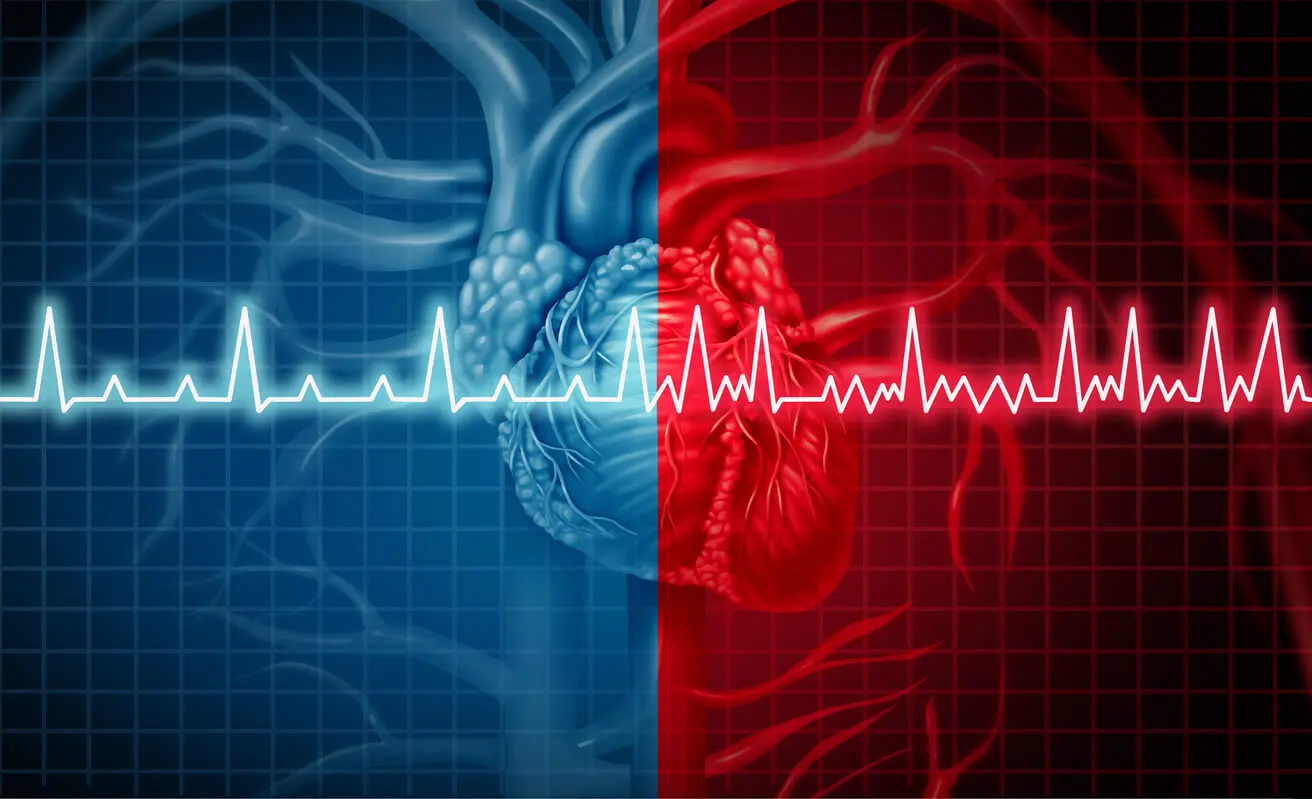Lisa Marie Presley Dies of Cardiac Arrest at the Age of 54: Here's What We Know


Written and verified by the doctor Leonardo Biolatto
Lisa Marie Presley passed away due to cardiac arrest at the age of 54, less than a month before her next birthday. On January 12th, 2023, she was found unconscious in her California home, but her death was finally confirmed at the hospital she was taken to.
The paramedics who found her at her residence reported that she wasn’t breathing, so they began cardiopulmonary resuscitation (CPR). Presley regained her pulse and was transferred to a medical center.
Doctors treated her as they would anyone in these cases, but were unable to reverse the condition.
Elvis Presley’s only daughter left behind a troubled history in many aspects. She had to manage her father’s extensive fortune, married four times, and suffered the suicide of one of her sons in 2020.
What is a cardiac arrest?
A cardiac arrest, like the one suffered by Lisa Marie Presley, occurs when the heart stops pumping blood normally. According to the National Heart, Lung and Blood Institute of the United States, the origin usually lies in an electrical failure that leads to an arrhythmia.
In general, what happens is that the person develops ventricular fibrillation. This is a totally disorganized beating of the ventricles, which are the chambers responsible for propelling blood from the heart into circulation in the arteries and veins.
Ventricular fibrillation is one of the most frequent causes of sudden death. When it’s reported that a patient died “suddenly” because his or her heart stopped, quite often there will have been a serious arrhythmia.
Disorganized contractions of the muscle fibers in the ventricles mean that blood cannot flow out to the rest of the body. Instead of a coordinated contraction for each beat, fibrillation is a disorganization of the contraction process that should be sufficient to carry blood to all the body’s cells.
This will almost always lead to death. To such an extent that statistics indicate that ventricular fibrillation (and other similar arrhythmias) are responsible for 85% of sudden cardiac deaths.
Find out more: How to Prevent Sudden Death in Sport
It isn’t the same as a heart attack
When we hear the expressions cardiac arrest and heart attack we may think that we’re talking about the same thing. However, this is not the case. Although the attack can lead to arrest, it doesn’t always happen that way.
Likewise, an arrest isn’t always a consequence of an attack.
A heart attack is a colloquial way of referring to acute myocardial infarction, as specified by The Texas Heart Institute. A heart attack is the death of a group of cells, to such an extent that the heart muscle becomes unable to complete its task of contraction.
With proper and prompt care, heart attacks progress favorably in many patients. Technical advances and specific protocols currently in place have improved survival in these circumstances.

Causes of cardiac arrest
Returning to cardiac arrest, which was the final cause of death reported in the case of Lisa Marie Presley, we should point out that there are underlying conditions that increase the chances of suffering from ventricular fibrillation. What we’re referring to here are circumstances, factors, and health problems that increase the risk of a person suffering sudden death.
The following are the causes that are most linked to a serious arrhythmia culminating in cardiac arrest:
- Coronary artery disease: Here we are talking about atherosclerosis in the arteries that carry blood to the heart muscle. The formation of atheroma plaques reduces the amount of oxygen the heart cells receive, so they tend to fail.
- Hereditary syndromes: Some malformations and defects that are transmitted from parents to children are responsible for arrhythmias that are difficult to resolve and manage. It’s worth mentioning Brugada syndrome by way of an example.
- Drug addiction: Cocaine users have a higher risk of arrhythmia. According to a scientific study from Brazil (in Portuguese) there are at least 16 detectable changes in an electrocardiogram in regular users of this drug. And all of them can evolve into fatal electrical changes.
- Arterial hypertension: Patients who live with high blood pressure for many years will suffer a change in the shape of their heart, especially if there was no adequate treatment or treatment was delayed. This change in the heart muscle increases the chances of developing arrhythmias.

Get to know more about Diabetes and High Blood Pressure: What Can You Eat?
The role of CPR in Lisa Marie Presley’s cardiac arrest
Cardiopulmonary resuscitation or CPR is key when treating a person who has a heart attack or cardiac arrest, as happened to Lisa Marie Presley. However, access to a defibrillator is the final way to save life and complete resuscitation.
According to news reports, paramedics performed CPR on Presley and were able to restore her pulse and transport her to a hospital. This transfer was essential to gain access to a defibrillator to reverse ventricular fibrillation.
The availability of these devices is so essential for survival that many countries have legislated the mandatory installation of automatic external defibrillators in places of mass attendance.
In fact, analyses have already been carried out to certify their cost-effectiveness. However, there will always be patients who don’t respond positively. The cardiac arrest of Lisa Marie Presley is a case in point. Despite the coordinated action of the health service, CPR was not sufficient.
What should be evident is that accelerating actions and responses to someone who is unconscious can mean the difference between life and death. People trained in CPR, good emergency procedures, and accessibility to defibrillators are the pillars of a good strategy.
It is with great sadness that I must share the devastating news that my beautiful daughter Lisa has left us.
All cited sources were thoroughly reviewed by our team to ensure their quality, reliability, currency, and validity. The bibliography of this article was considered reliable and of academic or scientific accuracy.
- Abad, A. M. D., Aparicio, L. G., Lahoza, E. L., Gracia, A. F., Bergasa, J. C., & Traid, J. R. (2022). Síndrome de Brugada. Revista Sanitaria de Investigación, 3(10), 14.
- Borrayo-Sánchez, G., Alcocer-Gamba, M. A., Araiza-Garaygordobil, D., Arias-Mendoza, A., Aubanel-Riedel, P., Cortés-Lawrenz, J., … & Reyes-Terán, G. (2020). Guía práctica interinstitucional para el tratamiento del infarto agudo de miocardio. Gaceta médica de México, 156(6), 569-579.
- de Oliveira, P. P. C., Bertholucci, G. P., Dantas, K. M., Rezende, H. T., Carrijo, A. V., Silva, C. H. H., & Junior, A. D. S. M. (2021). Alterações eletrocardiográficas relacionadas ao consumo de cocaína que são preditores de morte súbita cardíaca: revisão sistemática. Brazilian Journal of Development, 7(3), 29979-29995.
- Osorio-Cuevas, D. I., Avellaneda-Lozada, P., Mejía-Mejía, A., Cañón, L., Navarro-Vargas, J. R., Orjuela-Guerrero, A., … & Matiz, H. (2019). Costo-efectividad de la reanimación cardiopulmonar con el uso del desfibrilador externo automático, comparado con reanimación cardiopulmonar básica, para personas con pérdida de conciencia en espacios de afluencia masiva de público. Revista Colombiana de Cardiología, 26(1), 17-23.
- Rodríguez-Reyes, H., Muñoz Gutiérrez, M., Márquez, M. F., Pozas Garza, G., Asensio Lafuente, E., Ortíz Galván, F., … & Mariona Montero, V. A. (2015). Muerte súbita cardiaca. Estratificación de riesgo, prevención y tratamiento. Archivos de cardiología de México, 85(4), 329-336.
- Sepúlveda, J., Jofré, M. L., Lira, G., Veas, N., Lindefjeld, D., & Pardo, J. (2021). Muerte Súbita Cardíaca por Fibrilación Ventricular… Revista Chilena de Cardiología, 40(1).
This text is provided for informational purposes only and does not replace consultation with a professional. If in doubt, consult your specialist.








